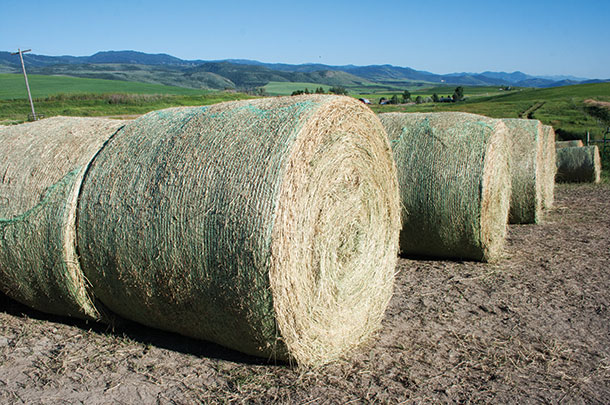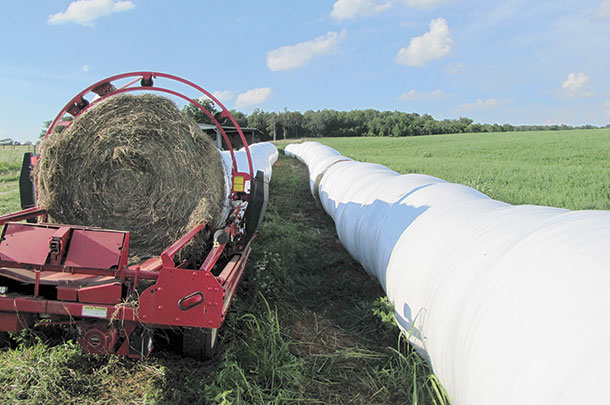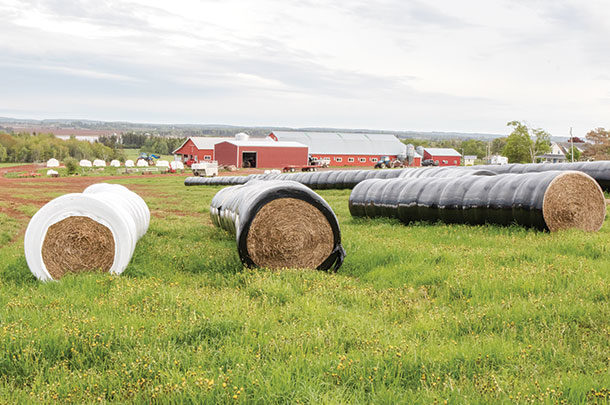This quote can be applied to outside hay storage because a substantial portion of the often-large losses that occur when large round bales are stored outside can be avoided when various practices are implemented.
Balers that compress hay more than others favor shedding of rainwater. As bale diameter increases, less hay surface is exposed to the elements. A bright, sunny and well-drained location away from trees should be selected as a hay storage site.

Hay/soil contact should be avoided by placing hay on rocks or some other free-draining material. The flat ends of hay should be butted together, but there should be at least 3 feet of space between rows.

A north-south orientation of rows of bales favors quicker drying after rains. Covers of various types can be used to protect hay from rain.
From Forage-Livestock Quotes and Concepts, D.M. Ball.
PHOTO 1: Round bales stored in plastic.
PHOTO 2: Round bales stored outside on the ground.
PHOTO 3: Round bales being bagged in plastic.











